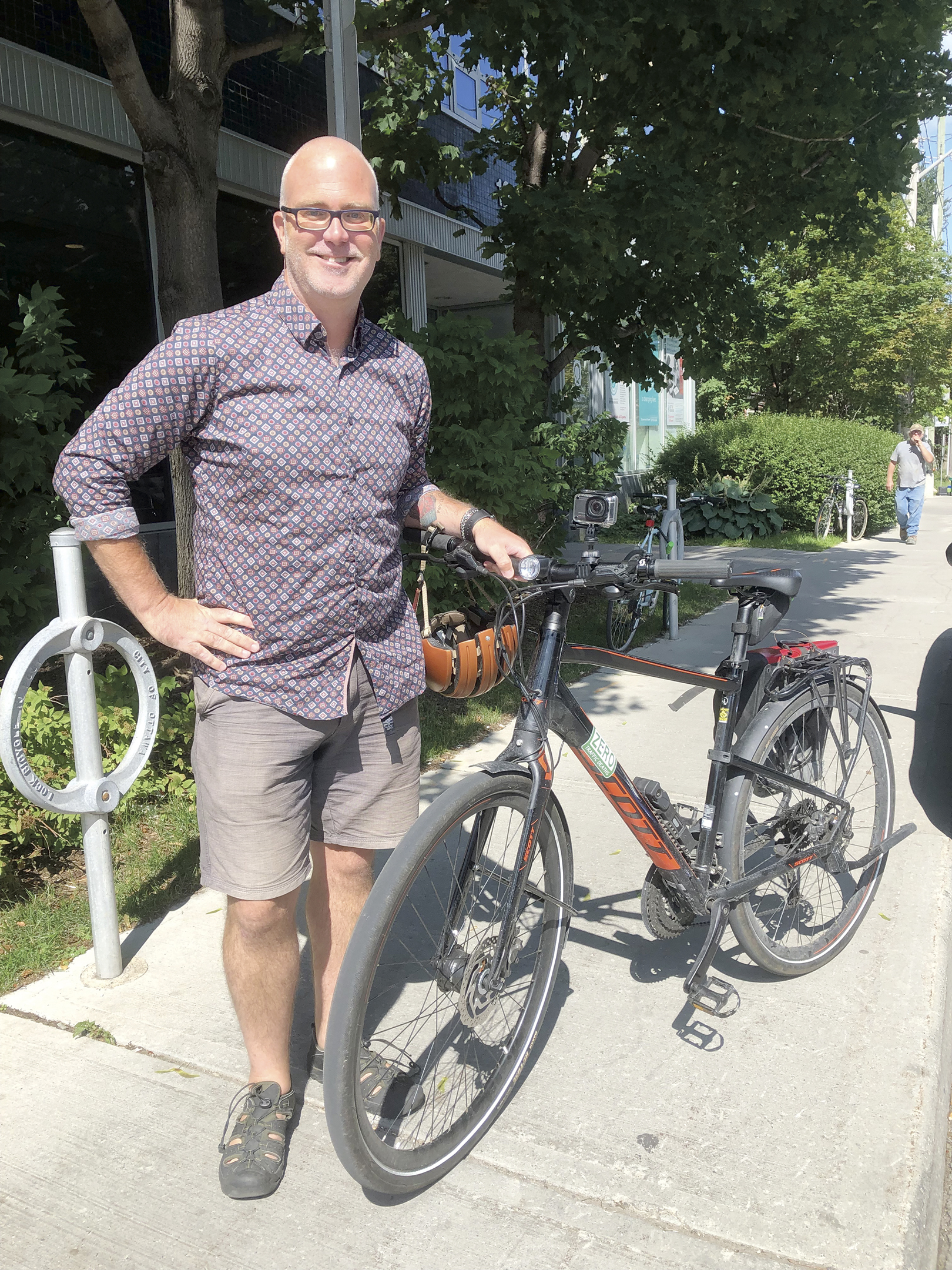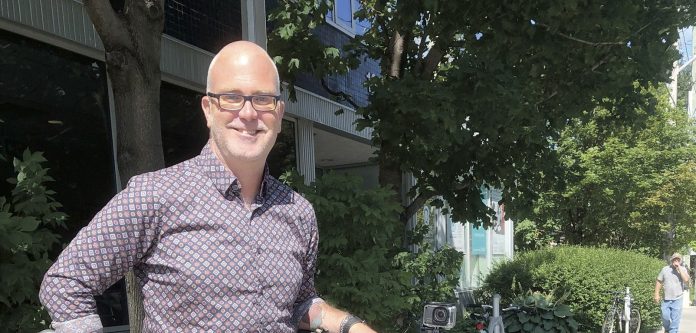
As the city prepares to update its official plan, Kitchissippi Coun. Jeff Leiper sat down with KT to talk about the issues that must be addressed in producing Ottawa’s next major planning blueprint. Here is an edited transcript of the conversation:
KT: Let’s start with the hottest topic of the day: the Confederation Line is set to start running on Sept. 14. What are your thoughts as light rail is set to arrive?
JL: The key will be to make sure that we don’t put it into service until we’re absolutely confident that it’s going to be reliable. It’s really critical to me that once we launch the train that it be reliable. I want to make sure that I’m clear: I have absolutely no doubt that the train is going to be safe. The city and the mayor are not going to rush a train into service if there is any risk to public safety. We’re going to have bus service running in parallel for … a few months. But once you start getting people used to getting off the bus at Tunney’s Pasture and getting on the train to go downtown, we don’t want to interrupt that on any kind of unpredictable basis. Once we put the train in service, it’s got to be reliable.
KT: What about the noise complaints surrounding trains running near Tunney’s Pasture?
JL: The noise is absolutely unacceptable. I first started getting the noise complaints ?– and I noticed how loud the train was because I cycle by there every day ?– as soon as testing began in earnest in April. So we’ve been pressing the city to address the noise since April. They’ve taken measurements; they agree that it’s too loud and the commitment is there to bring that noise level down. The noise is not due to the engine ?– it’s due to the steel wheels on the steel rails. Right now, those rails haven’t been ground, so they’re uneven. At whatever microscopic level, they’re pockmarked ?– they’re not smooth. Rail grinding is the first step to see if we can alleviate some of that noise. And then if that doesn’t work, the city is going to explore what they call rail dampening, which is to put some kind of rubber between the ties that will absorb more sound. I have let the city know that I’m not going to be happy until the noise is at least as quiet as the previous buses.
KT: What about the official plan? Can you describe in layman’s terms what the “five big moves” are that the city is looking at in its official plan review and where its priorities should be?
JL: It’s really important that people understand what the official plan is. The province is in charge of land use planning in Ontario. They’ve delegated decisions to the corporations called municipalities. The province has told cities, you are going to grow through intensification near transit. That’s the provincial policy statement. So in big broad strokes, our official plan is going to set out how Ottawa is going to grow through intensification. And that means we’re going to intensify near transit. Every planning decision that the city makes is going to be looked at through the lens of the official plan. The official plan has to abide by the provincial direction that we grow through intensification.
KT: And what exactly are the “five big moves”?
JL: The first big shift that we’re looking at is an even greater focus on intensification. In our planning horizon going to 2042, over half of the new builds in Ottawa should be (through) intensification ?– that is, growth near transit stations, growth on traditional mainstreets, growth near big employment centres. The second big move is that we want most of our trips to be accomplished by something other than private automobile. Right now, our target is not that aggressive. The third one is a greater focus on urban design. If we’re going to intensify, that means more tall towers near our transit stations, more dense developments on our transitional mainstreets, more infill. If we’re going to have a greater variety of (business and residential) mixed cheek by jowl with each other, and they’re going to be denser, what are the parameters around that to maintain livable communities? How will those be designed? What is the shape of those buildings? What kind of setbacks do we need for them? We have that in nascent form; we have highrise guidelines, we have midrise guidelines, we have infill guidelines. How do we make those have greater teeth and what should they be? The fourth big move is a resilient city. In a way that we have not seen in previous versions of the official plan, (there is) a recognition of climate change and building a city that is resilient in the face of climate change. Big move No. 5 is around economic development.
KT: What are your biggest concerns about those priorities?
JL: The five big moves that were outlined at council have broad buy-in. There’s no question that they are the right moves in the minds of most. But one of the things that we did not see as councillors and that we will have to push staff to incorporate in a better way is social injustice, for want of a better term. As we build a city that is more resilient to climate change, we have to take into account inequity in a more thoughtful, explicit way. We need to be very thoughtful about the different effects that climate change has on the privileged versus the vulnerable. I’m nervous about how thoughtful we’re going to be about intensification. We can’t just take the reins off and let the developers have at it.
For example, we are making the common-sense move to intensify near transit. But we have not got enough of a focus on making sure that intensification is going to be affordable. The people who can best take advantage of public transit like LRT, we don’t want them forced to live in Bells Corners because house prices in Westboro are too high. On Scott Street, we have approved a parade of very tall buildings. And that is in keeping with the direction of the official plan. None of them incorporate any affordable housing components. So the people who are going to be able to live on Scott Street ?– which over time is going to be turned into a nice, complete street with cycle tracks, it’s right next to LRT ?– the only people who are going to be able to afford to live in that great neighbourhood, around the corner from Richmond Road’s amenities, the Farm Boy, the great schools in the neighbourhood, the green space that’s available, Westboro Beach, will be the rich. And that is not a thoughtful way to pursue intensification.
Our most vulnerable are going to continue to be pushed out to neighbourhoods like Bells Corners and Vanier that don’t have the same level of amenities. And that means that the strain on our non-LRT public transit is just going to be that much higher. We need to think about things like fares and routes to make sure we’re not wholly focused on LRT in our transportation master plan. If the official plan speaks to people’s vulnerabilities, then when we’re developing our transportation master plan through that official plan lens, I hope we’ll be more thoughtful about the intensification behind that. The nice thing is, we’re not going to pass the new official plan until 2022. The five big moves are the right ones, and we have the opportunity to talk to our staff about how residents and councillors want to see that evolve.
Part two of this conversation will appear in the October issue of KT.
